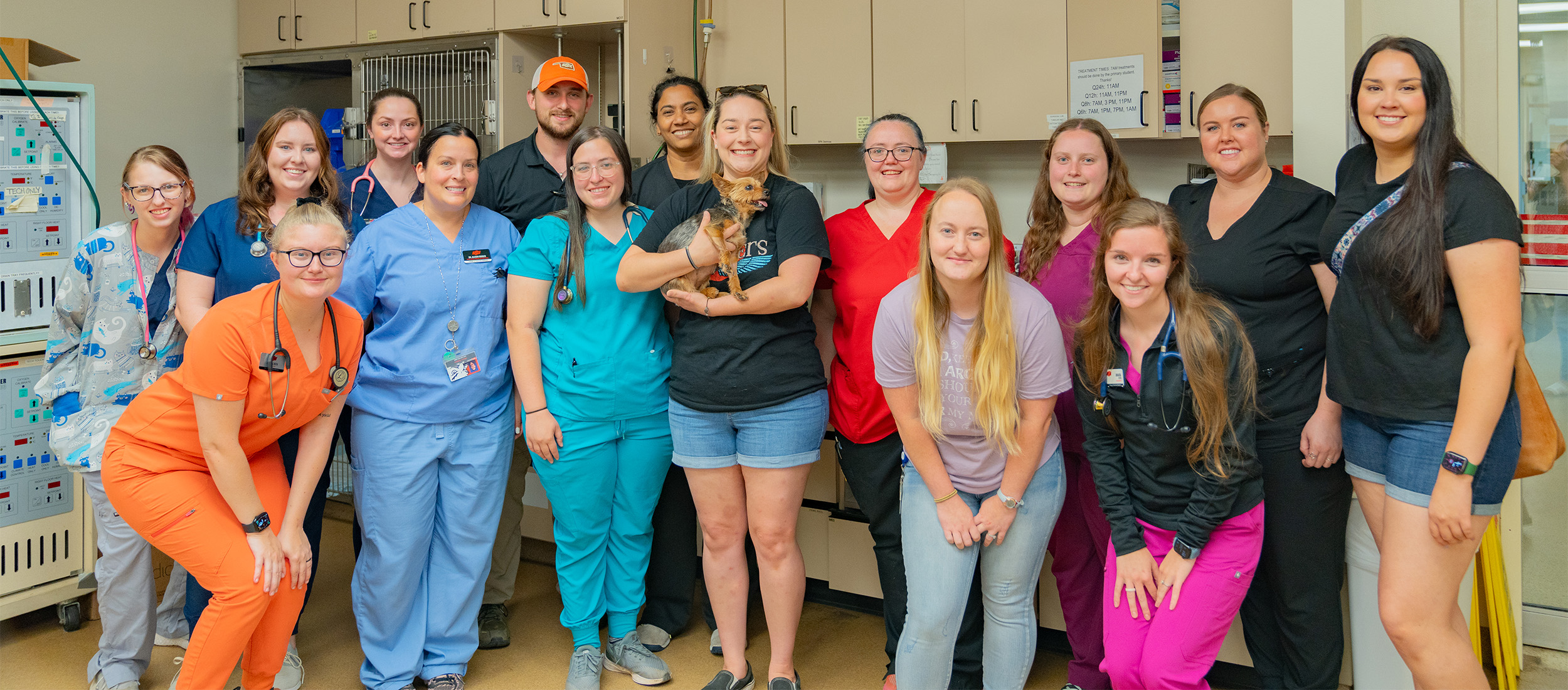
OSU Veterinary Medical Teaching Hospital nurses dog back to health after severe accident
Monday, August 21, 2023
Media Contact: Taylor Bacon | Public Relations and Marketing Coordinator | 405-744-6728 | taylor.bacon@okstate.edu
Oklahoma State University’s Veterinary Medical Teaching Hospital team came to the rescue for Penny, an approximately 10-year-old female yorkie, after she escaped her yard and was found unable to walk on the side of the road.
“Penny was introduced to us in critical condition,” said Dr. Allison Biddick, emergency and critical care specialist and small animal medicine assistant professor. “She had a seizure on the way to the hospital and presented with signs of severe brain injury.”
The emergency staff stabilized her with oxygen therapy, pain medications, medications to decrease swelling in the brain, IV fluids and shock therapy in an attempt to manage her shock and increase oxygen delivery to her brain. She was also given anti-seizure medications immediately because of her history of seizures and the severe trauma from her injuries.
“Once she was stabilized, we moved her to CT and did a full-body CT scan where we found multiple skull fractures, including some that were actually pressing on the brain tissue itself,” Biddick said.
Initially, Biddick was concerned about a neck lesion as they wanted to avoid further damage to any of the existing injuries.
“You have to be extremely cautious when handling animals with brain trauma, especially if you think their vertebrae are unstable in any way,” Biddick said.
Luckily, they found her neck was OK and only her skull and her brain were affected. This allowed the team to focus their attention on Penny’s injuries and devise the appropriate treatment plan.
Penny remained at the hospital for almost a week. She was treated with supportive care, oxygen therapy, pain medications, nutrition and anti-seizure medications. With the care and treatments she was given, her condition improved each day.
“I was so grateful for how many times they let us visit Penny while she was in the hospital,” said Jasmine Purscell, Penny’s owner.
Biddick credits Purscell for her willingness to give Penny every chance at trying to get better, despite not knowing whether she would improve. Even with all recovery efforts, Penny was still unable to walk when she was sent home. After a few days of continuing physical rehabilitation at home, she regained her ability to walk.
Purscell later informed Biddick that Penny appeared to be back to her normal self. After Biddick’s re-examination, she found no major residual neurologic deficit.
“Both doctors and the students were compassionate, kind and explained everything wonderfully,” Purscell said.
After Penny regained most of her strength, Purscell brought her back to the hospital for everyone to see the progress she made. Penny was welcomed with a crowd of hospital staff and students excited to see her.
“The students, technicians and doctors put in so much time and effort, and we don't always get to see cases with severe injuries have a good outcome,” Biddick said. “When we do have one that defies the odds and we get to do all those diagnostics and actually see the skull fractures on CT, it was a great learning experience for everybody.”
In the comfort of her home, Penny is living a healthy and happy life thanks to the help of the emergency and critical care team.
“Penny was a reminder that we are making a difference for animals and their families,” Biddick said.
Story By: Bailey White, CVM Communications Intern | bailey.m.white@okstate.edu
